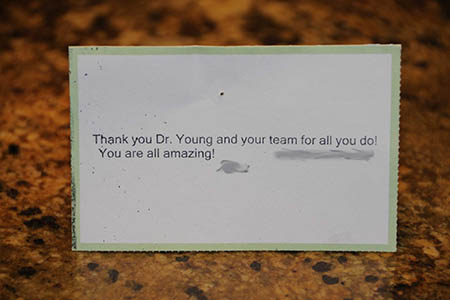If you’ve started to notice fine lines, acne scars, or sun damage appearing in your selfies, you’re not alone. While topical products can provide temporary relief by softening the skin, they cannot replace vital components like collagen and elastin, nor can they restore an even skin tone. That’s why fractional lasers come into play, offering solutions that reach deeper layers of the skin.
The Science of Fractional Lasers
At its core, a fractional laser works on a brilliantly simple principle: microscopic treatment zones.
Imagine your skin is a large field. Traditional ablative lasers would treat the entire field at once, leading to a long and intense recovery. Fractional lasers, however, create thousands of tiny, microscopic columns of energy that penetrate deep into the skin’s layers, leaving the surrounding tissue completely untouched.
Here’s how Fractional Lasers Rejuvenate your skin
- Stimulates Collagen Production: The C02 laser’s controlled energy creates micro-injuries in the dermis, your skin’s foundational layer. This triggers your body’s natural healing response, sending a surge of collagen and elastin to repair the treated areas. Collagen is the essential protein that gives skin its firmness and smoothness. This neocollagenesis process continues for months, gradually improving skin tightness and reducing wrinkles from the inside out.
- Resurfaces the Surface: As the old, damaged tissue in the microscopic treatment zones is naturally eliminated, it is replaced by new, healthy skin cells. This process effectively resurfaces the skin, reducing the appearance of sun spots, evening out skin tone and texture, and minimizing the look of acne scars and large pores.
The genius of this technology is that the untouched skin surrounding each micro-treatment zone acts as a natural healing reservoir, drastically speeding up recovery time compared to older laser methods.
Types of Fractional Lasers
Fractional lasers fall into two main categories, ablative and non-ablative, and the right choice depends on your goals, skin type, and tolerance for downtime.
Ablative Fractional Lasers
These lasers work by carefully removing the outer layer of skin while penetrating deeper layers to stimulate collagen production. Because they resurface and remodel at the same time, they are considered the gold standard for treating more advanced skin concerns like deep wrinkles, significant sun damage, and noticeable scars. Patients can expect a more intense experience, often with anesthesia for comfort, and a recovery period of 1–2 weeks. While the downtime is longer, the trade-off is that dramatic results are usually seen after just one treatment.
Non-Ablative Fractional Lasers
Instead of removing skin layers, non-ablative lasers pass energy through the surface, heating the underlying tissue to stimulate collagen without breaking the skin barrier. They are best suited for milder concerns such as early fine lines, uneven tone, or light acne scars. Recovery is minimal, where most people can return to normal activities within a couple of days, with temporary redness or a sandpaper-like feel. Since the approach is gentler, results appear gradually and typically require a series of 3–6 treatments to achieve noticeable improvement.
Key Recovery Differences
- Ablative: More intensive healing with peeling, redness, and pinkness lasting days to weeks, but long-lasting improvements in a single session.
- Non-ablative: Mild redness or texture changes for a few days, little to no downtime, and cumulative results with multiple treatments.
Both options are safe and effective when performed by an experienced provider. The main difference lies in how aggressive the treatment is, how much downtime you can allow, and how quickly you want to see results.
Who’s a Good Candidate?
You may be a match if you want to improve:
- Fine to moderate lines and crepey texture
- Acne scars or surgical scars
- Enlarged pores and dull tone
- Sun spots and mottled pigmentation
A Safer Path to Smoother, Healthier Skin
Because fractional lasers treat only a fraction of the skin at a time, there’s more intact tissue to help you heal faster. That translates to:
- Lower risk of infection and scarring compared with fully ablative resurfacing.
- Faster re-epithelialization (the skin reseals more quickly).
- Customizable intensity: power, density, and number of passes can be tailored to your skin.
Dr. Philip Young’s practice focuses on pre-treatment planning, precise energy settings, and aftercare coaching. These steps, along with meticulous technique, are essential for achieving natural-looking results within a safe comfort zone.
Embrace a Radiant, Rejuvenated Complexion
If you are ready to address skin concerns that hold you back from feeling fully confident, fractional laser resurfacing offers a scientifically proven and safe path forward. It is an investment in rejuvenating your skin’s health and vitality.
We invite you to take the next step toward revealing your most radiant skin. Schedule a consultation with Aesthetic Facial Plastic Surgery to discuss your goals and create a personalized treatment plan tailored to your journey.


 Patient Reviews
Patient Reviews Cards From Patients
Cards From Patients Share Your Story
Share Your Story






